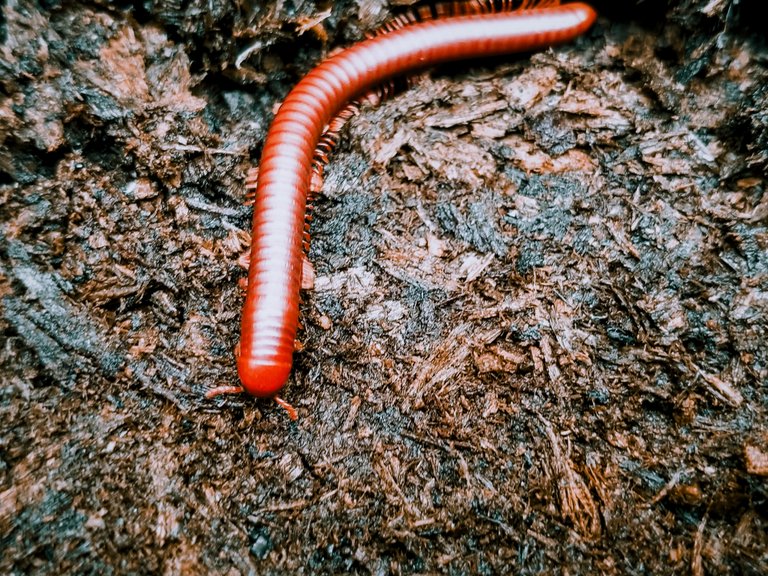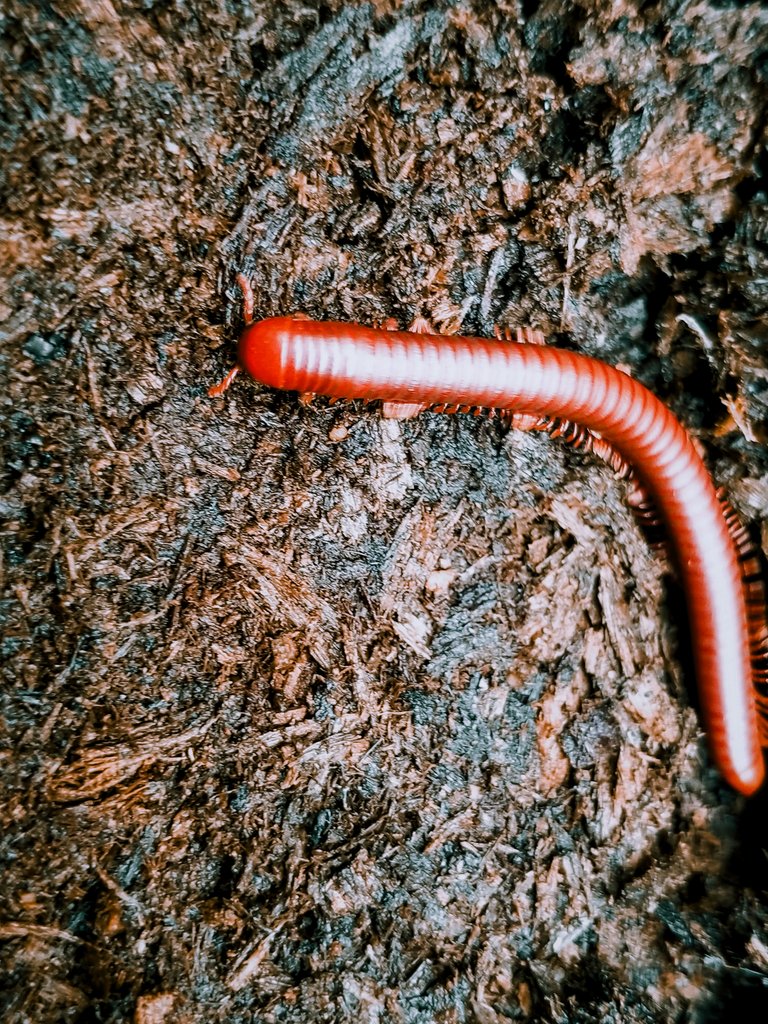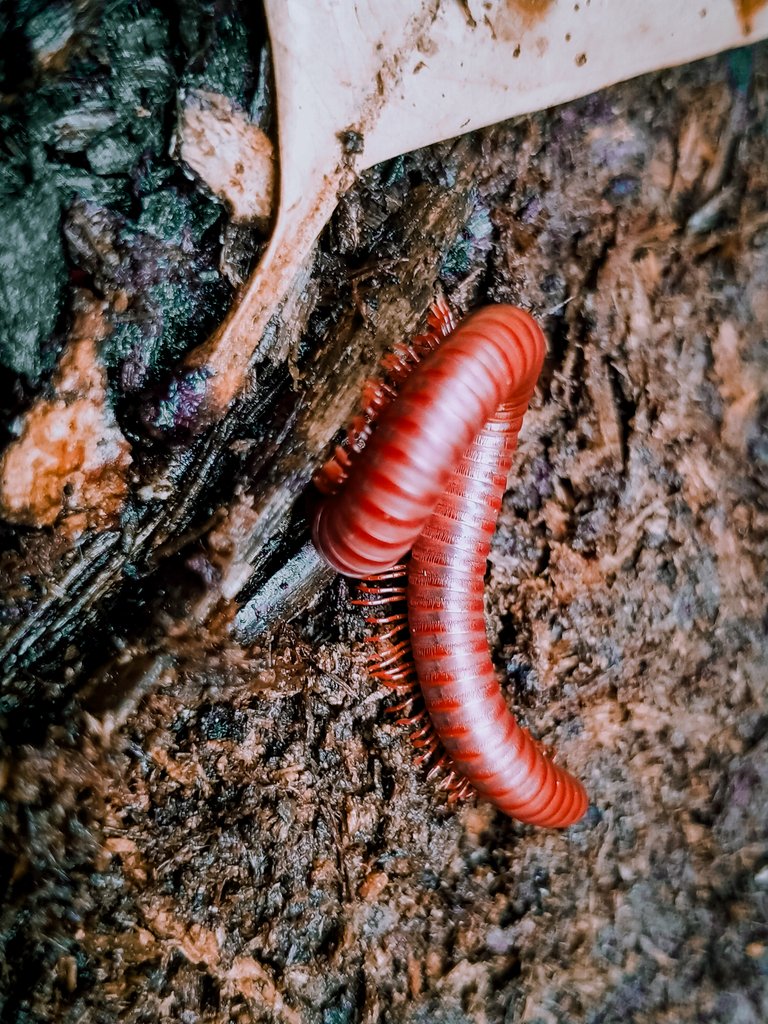| Latin Name | Observation date | Location |
|---|---|---|
| Genus Trigoniulus | October 07 2024 | Buket Alue Puteh, Aceh, Indonesia |

The Trigoniulus genus is a group of animals belonging to the myriapoda family or best known in Indonesia as "kaki seribu", the Trigoniulus genus is part of the julida order and is very easy to find in humid places such as tropical forests or humus areas, the Trigoniulus genus is a genus that has interesting species with striking physical characteristics and also interesting ecological roles.
one of the main characteristics of members of the genus Trigoniulus is their elongated and segmented bodies, with each segment equipped with two parallel legs, the number of segments on their bodies varies and it all depends on the species, and what is certain is the segments that the species has. of the Genus Trigoniulus exceeds a hundred, apart from that the skin color of the Genus Trigoniulus also varies greatly from dark red, orange and black, and the species that I found this time is one of the species that is easiest to find in damp forests, the body color that is owned by The Trigoniulus genus will be a powerful shield for camouflage in their natural habitat.
The Trigoniulus Genus are herbivores that eat rotting leaves and wood and other detritus. Apart from being beautiful and unique, the Trigoniulus Genus has an important role in the ecosystem, they help in the process of decomposing organic matter and restoring soil, the dirt produced by the Trigoniulus Genus will become the nutrient cycle in the soil and ultimately the processes that occur will help the plant growth process, so if in your garden there are lots of Trigoniulus Genus hanging around then my advice is to leave them alone because your garden will get lots of nutrients naturally produced by the Trigoniulus Genus.
apart from that, the Genus Trigoniulus also has an interesting reproductive strategy, they usually carry out sexual reproduction where the male will look for a female and perform a courtship ritual, after that the female will lay eggs in a safe place from egg-hunting predators, and usually during the Genus egg-laying process Trigoniulus will live in groups, this is done solely to protect the eggs from being targeted by predators, then the metamorphosis process experienced by the larvae of the Genus Trigoniulus also shows a unique phase, where they will go through several stages before reaching the adult stage.






| Camera used | smartphone |
|---|---|
| Lens | Macro |
| Photography | Genus Trigoniulus |
| Location | Buket Alue Puteh |
| Photographer | @lightofhope |
| Link to original | community |
|---|---|
| Link | https://www.inaturalist.org/observations/246303587 |
| Latitude Longitude | Map | |
|---|---|---|
| =5.080479 | =97.46383 | https://www.openstreetmap.org/?mlat=5.0804793232&mlon=97.4638302997 |






